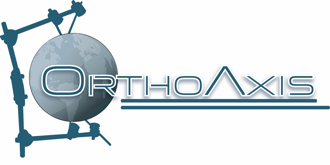Product Overview
Restoring leg length, joint stability, and range of motion involve distinct surgical challenges. The Zimmer M/L Taper Hip Prosthesis with Kinectiv Technology introduces a system of modular stem and neck components designed to help the surgeon restore the hip joint center intraoperatively by addressing leg length, offset, and version independently. The resulting array of neck options efficiently targets a broad range of male and female patient anatomies.
Clinical Benefits
• Independent leg-length and offset adjustability to optimize hip joint kinematics and function
• Independent version adjustability to optimize head center position without affecting proximal stem fit, leg length, or offset
• Reduced neck geometry and anteverted/retroverted neck options for efficient impingement resolution and enhanced range of motion, which helps to mitigate the risks of accelerated implant wear and dislocation
• Broad range of head centers better match the wide range of patient anatomies among men and women, help avoid low, bone-sacrificing neck cuts, and provide more opportunities to optimally restore fit and function in the limited-view environment encountered in minimally invasive hip procedures
• Low-profile implant eases stem insertion and minimizes soft-tissue trauma
Independent Control
Proper offset and leg-length restoration improve total hip replacement function and minimize the risk of dislocation and limp. For traditional hip systems, leg length and offset are coupled and surgeons are often forced to accept the coincidental change in leg length or offset when making changes intraoperatively (ie, when simply changing the head). The Zimmer M/L Taper Hip Prosthesis with Kinectiv Technology allows surgeons to independently adjust leg length and offset intraoperatively after stem implantation to optimize each dimensional factor without affecting the other.
The Zimmer M/L Taper Hip with Kinectiv Technology also allows independent version adjustments after stem implantation. This facilitates optimal stem position based on the patient’s proximal femoral anatomy while restoring head center position.
Proper offset and leg-length restoration improve total hip replacement function and minimize the risk of dislocation and limp. For traditional hip systems, leg length and offset are coupled and surgeons are often forced to accept the coincidental change in leg length or offset when making changes intraoperatively (ie, when simply changing the head). The Zimmer M/L Taper Hip Prosthesis with Kinectiv Technology allows surgeons to independently adjust leg length and offset intraoperatively after stem implantation to optimize each dimensional factor without affecting the other.
The Zimmer M/L Taper Hip with Kinectiv Technology also allows independent version adjustments after stem implantation. This facilitates optimal stem position based on the patient’s proximal femoral anatomy while restoring head center position.
Independence
• Independent leg-length and offset adjustability following stem implantation
• Leg-length discrepancy is a leading source of patient dissatisfaction in total hip replacement3-6
Version By Design
• Independent version adjustability following stem implantation
• Progressively increasing version with decreasing offset to better match patient anatomy
• Intraoperative range of motion adjustment to resolve impingement and mitigate risk of accelerated implant wear and dislocation
Intraoperative Flexibility
• No need for surgeon to adjust stem fit to achieve version
• Version options to optimize stem fit and head center location
Range Of Motion
Impingement of the femoral and acetabular components has been shown to increase risk of dislocation and accelerate wear of the liner. Since Kinectiv Technology uses +0 heads only, the geometry of each neck component can be specifically optimized for strength and range of motion based on the +0 head length. Kinectiv Technology also eliminates the use of skirted femoral heads that are necessary for the longer offset options of other designs. In addition, the ante/retroverted necks allow the surgeon to adjust version intraoperatively after cup and stem implantation and further fine-tune the range of motion for the patient.
Anteverted and Retroverted Necks
• When cup placement is not optimal, version options can relieve impingement
• Version options provide opportunity for surgeon to intraoperatively tune the range of motion to avoid dislocation
• Dislocation is the second most prevalent complication in total hip replacement, with a 2%-4% incidence
• Dislocation is a significant financial burden to the healthcare system
(www.zimmerbiomet.com)







